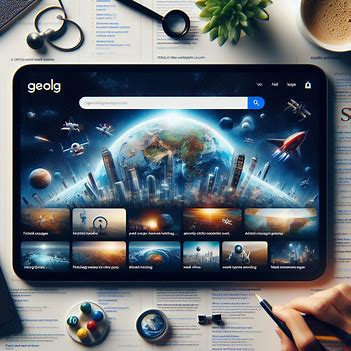So, what is SEO Types? SEO stands for ‘Search Engine Optimization.’ It’s all about getting more people to visit your website through search engines without paying for it. The idea is to make your site show up higher in search results when people look for things online. And there are mainly three SEO types.
Table of Contents

To do good SEO, you need to do a few things:
- Find the right words that people often search for.
- Create really good and helpful content on your website.
- Put links to your site from other high-quality websites.
- Keep track of how well your efforts are working.
Differences between paid and organic search in simpler terms
- Position:
- Paid search results are at the top of search pages.
- Organic results appear below the paid ones.
- Time:
- Paid search gives quick results, sometimes in minutes.
- Organic search takes more time, often weeks, months, or even years.
- Payment:
- Paid search involves paying for each click (PPC or pay-per-click).
- Organic search traffic is free but requires time and effort.
- ROI (Return on Investment):
- Paid search ROI is easier to measure, but it can stagnate or decline.
- Organic search ROI is a bit harder to measure but often improves over time.
- Share of Traffic:
- 20-30% of people click on paid results.
- 70-80% of people click on organic (SEO) results, making it the majority.

Three SEO types
For a digital marketer, it’s crucial to know how to make your brand, website, or company easily discoverable by people searching online. Keeping up with the evolving trends in SEO is essential to stay competitive. Although SEO undergoes frequent small changes, its fundamental principles remain constant. Let’s break down SEO into three key parts, or pillars, that you should understand and work on consistently.
- Technical Optimization:
- This is about doing things on your website that boost SEO but aren’t about the content.
- It’s like the behind-the-scenes work to make your site work well for search engines.
- On-Page Optimization:
- Focuses on making your content relevant and enjoyable for users.
- Involves using the right keywords in your content and can be done through platforms like WordPress or Wix.
- Off-Page Optimization:
- Works on improving your site’s search rankings from outside the site.
- Mainly done through backlinks, which are links from other sites that boost your site’s reputation.

Let’s simplify how search engines work:
When you search for something online, you use a search engine to find the answer. These engines use computer programs called algorithms to understand what you’re looking for and provide the best results. Here’s how it happens in three steps:
Step 1: Crawling
The first thing search engines do is finding new pages. They use web crawlers, sometimes called ‘spiders’ or ‘robots’, for this job. These crawlers have a mission: discover new web pages and check if old ones have changed.
How do they do this? By following links. Imagine your website is like a book, and each page is a chapter. The crawlers start at the beginning (your homepage), read through, and whenever they find a link, they follow it. So, if your homepage links to a new blog post, the crawlers will follow that link to discover and record information about your fresh content. It’s like an explorer navigating through a map of links on the internet.
Step 2: Indexing
The next step is organizing, or indexing. This is when a search engine decides if it wants to keep the information it found during crawling. Think of it like a librarian deciding whether a book is worth putting on the library shelves.
If the search engine thinks a web page has good and unique content, it adds it to its index—a big database of web pages. This index is crucial for the final step in the process.
However, not all pages make it into the index. Some might be left out if they have:
- The same content as other pages.
- Low-quality or spammy content.
- Couldn’t be properly explored during crawling.
- Lack links from other websites.
Step 3: Ranking
Now comes the most important part—ranking. This happens after the search engine has found and organized the information from your site.
There are more than 200 things that help decide the ranking, and they all fall into three main categories: making sure your website is technically well set up, having good content on your pages, and being recognized and respected by other websites.
Some examples of what the search engine looks at include:
- Whether your main word is in the title.
- How fast your website loads.
- If your website is known and trusted in the online world.
So, ranking is like a search engine saying, “Okay, out of all these pages, which ones are the best for what this person is searching for?” It’s like a popularity contest for web pages!

Ordering and Ranking
When you search on Google, it uses an algorithm called Google Hummingbird to decide which results to show first. There’s also a smart helper in the mix called RankBrain
- Understanding Unfamiliar Words:
- If RankBrain encounters a new word, it uses artificial intelligence to figure it out. It connects it to similar searches to understand better.
- Translating Keywords into Concepts:
- RankBrain changes keywords into topics and ideas. This way, it can give better results, even for unique or unusual searches.
- Focusing on User Satisfaction:
- Unlike just picking the best keyword matches, RankBrain looks at websites that make users happy. It rewards sites that give people what they want.
In simpler terms, Google Hummingbird and RankBrain work together to organize and show results, making sure you get helpful and satisfying answers when you search. It’s like having a super-smart friend who understands what you’re looking for, even if you don’t use the perfect words.
Want to read new things than click on surprise me





